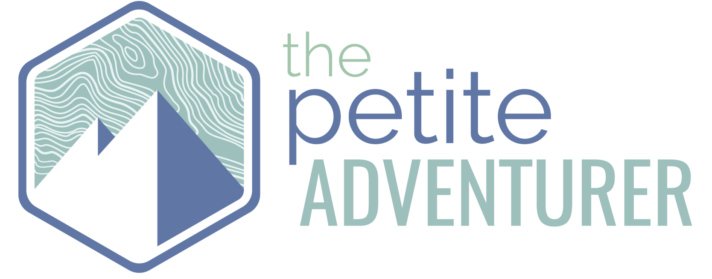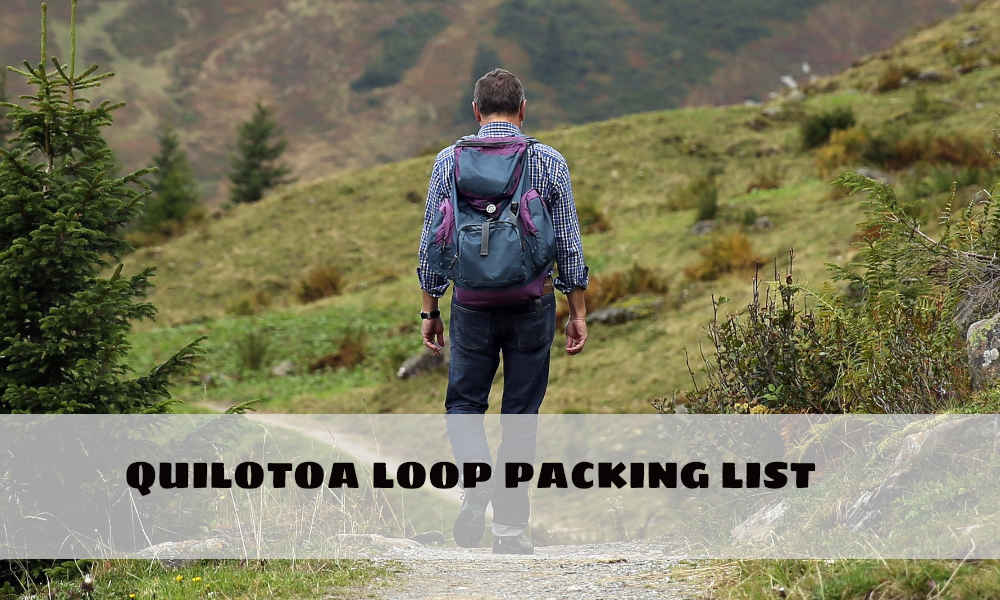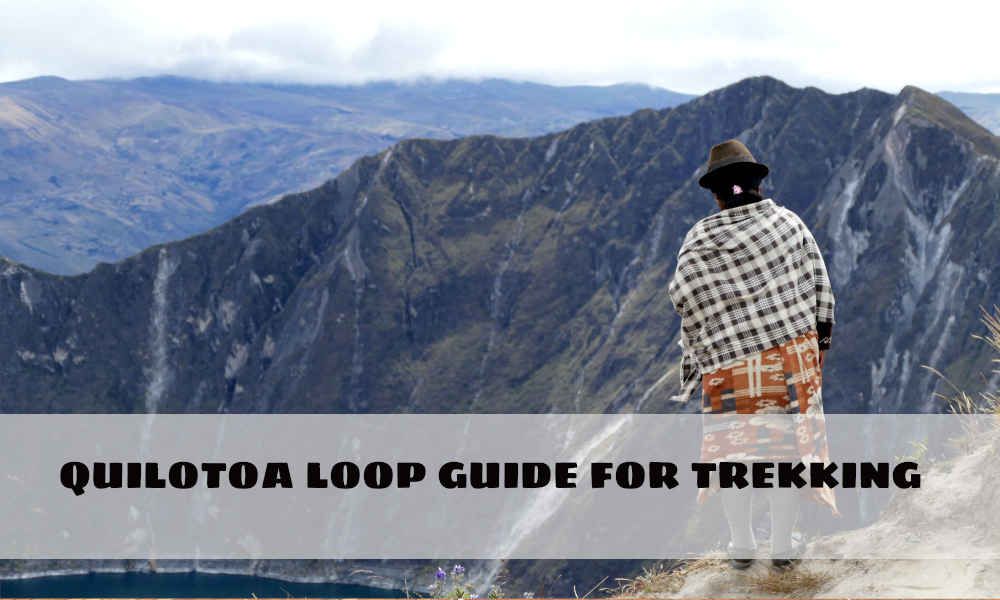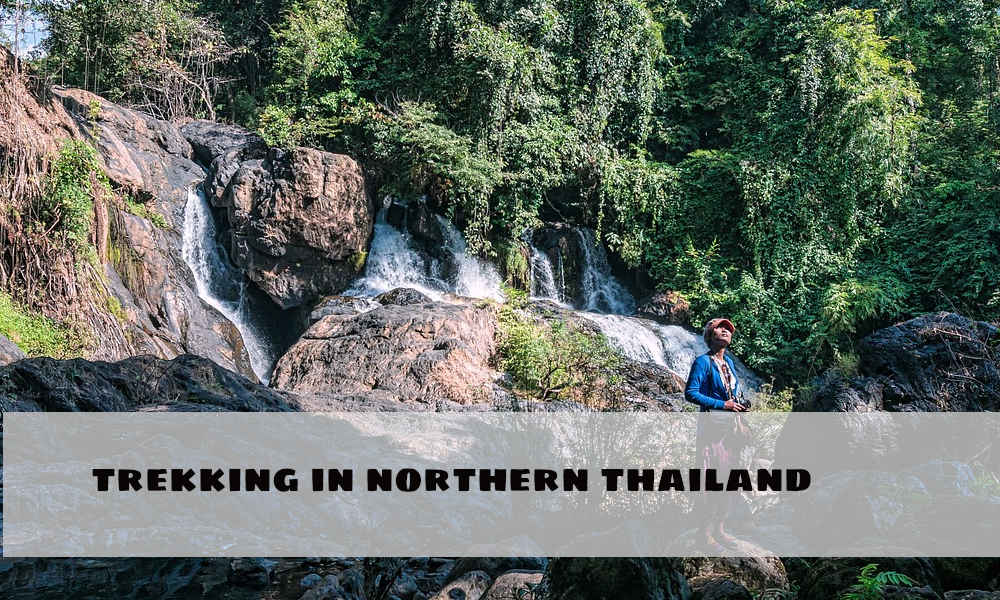The Tour du Mont Blanc (TMB) is an inspiring 170km trek around the Mont Blanc massif, which begins in France and crosses through Italy and Switzerland. It’s no surprise that it is wildly popular in Europe; not all trails were created equal. The TMB takes the trekker through unbelievable landscapes via snowy mountain summits and gorgeous green pastures where happy cows slowly graze.
Charming mountainside refuges, along the way, whip up hearty dinners eaten in cozy common areas where fellow trekkers share stories of their daily adventures and review maps for the next day. If you’re thinking this might be the right time to see the Alps for yourself, here is everything you’ll need to know to prepare for a self-guided Tour du Mont Blanc hike.
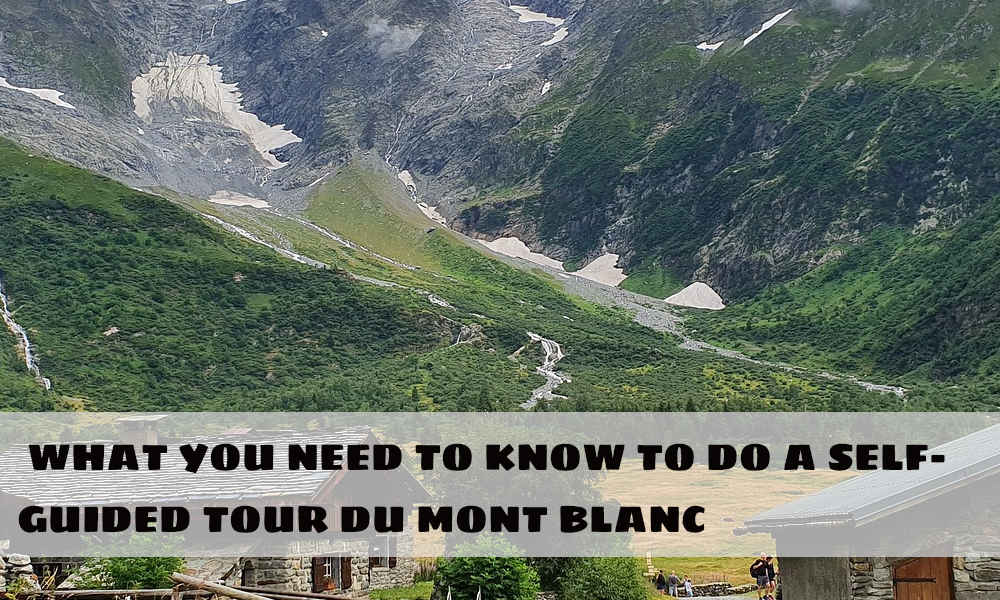
Should I self-guide or go with a Tour company?
As many things in life, every decision is multi-faceted. Self-guiding your Tour du Mont Blanc hike can come with many positives, such as lower costs, the opportunity to forge friendships with others on the trail, move at your own pace, and the full autonomy to change plans in case unexpected circumstances arise (such as creating a “rest day” or waiting out bad weather). You are also solely responsible for understanding the trail and necessities needed to complete each day successfully.
On the other hand, if you decide to go with an organized adventure company, there are also many benefits. Your daily lodgings are pre-arranged, which saves a lot of planning on your end. Many of the companies will offer services to send your belongings from refuge to refuge so that you are only required to carry a light daypack. Your guide will be available to answer questions, watch for your safety, and give you tips as you navigate your way through the Alps. You are also traveling with a group, so there is a guarantee you will always be able to ask other people to take your picture as you pose in front of an epic mountain.
Okay, cool. I’m going on to self-guided Tour Du Mont Blanc. What should I do first?
Buy Cicerone’s The Tour of Mont Blanc Complete Two-Way Trekking Guide. Once in this book is in hand, decide whether you want to go clockwise or counterclockwise and how many days you want to allot to the trek. Are you going to do the full loop or partial? Making these decisions will help you decide which airports or major cities you will travel from.
We would recommend reading the introduction and daily route walkthroughs several times. Decide whether you want to stay in the refuge every evening or go full backpacking mode with your own tent. Highlight important parts such as difficult ascents, fantastic photo opportunities, and water/refreshment sources. You’ll be bringing this book along with you during the trek, so don’t be afraid to mark it up with notes.
What is the best time to do Tour Du Mont Blanc Hike?
You will be high-walking in the Alps, so understandably, there is a possibility of inclement weather (depending on the previous year’s snowfall or the early/late onset of cold conditions). Generally speaking, the season may be able to start the last week of June or early July and last until the end of September. The peak season is in August, with the best weather conditions noted in early September.
How many days should I plan for the Tour Du Mont Blanc hike?
The full Tour du Mont Blanc circuit is 170km long and is typically completed within 10-12 days. Depending on the route you decide to take (traditional and alternative are 11 and 10 days, respectively), this number can vary. It’s important to ask yourself whether you might want to take a day off the trail to explore a city/town to rest or if you want to keep charging ahead. We would highly recommend working on one of these “recharge” days to rest your aching body and spend a slow moment enjoying one of these idyllic mountain hamlets.
When should I start reserving accommodations?
You don’t necessarily have to reserve your refuges in advance (you can also walk up if needed), although the peace of mind from advance bookings was invaluable for someone. If you are going a bit later, do note that some of the refuges close for the season mid to late September. Make sure you double-check check dates of operation to have a good sense of availability if you decide you’re going to book on the fly. If you happen to be trekking in August, definitely reserve your spot as soon as possible since this is the busiest season and refuges do sell out.
If you pre-arrange your reservations, the nice part is that most of the refuges require a small deposit (or none at all) for the booking. If your plans end up changing unexpectedly, you aren’t forfeiting payment for a full night. Another point of consideration for reserving in advance is that it also makes you accountable for completing your daily trek so that you don’t mess up your own schedule. While the trekking guidebook does list some places, you found that this Tour du Mont Blanc website was immensely helpful in uncovering other accommodations. To get a sense of what your Tour du Mont Blanc hike might look like, here is one actual 7-day itinerary, including the refuges.
What should I pack?
If you bring it, you’re going to have to carry it. Somehow, it’s easy to forget this when you are packing at home and want to include all of your gadgets and articles of clothing. For a petite female, a 36L pack works marvelously in the 12-15 pound range. Depending on your body size and willingness to carry, you can also use a 50L pack and get up into the 20-25 pound range.
Keep in mind that you’ll be trekking anywhere from 7-12 miles per day with difficult ascents and descents in the Alps. After a while, you’ll feel every ounce of weight on your body. Don’t forget to factor in that you’ll also be carrying water and food, which adds a significant amount of heft, too. Check out 7 day self-guided Tour du Mont Blanc packing list, which will also help you prepare.
What is it like to stay at a refuge?
Outside of the alps, the favorite part about trekking the TMB was staying at the refuges. Even though many of them only offer dormitory-style bed situations, the energy and camaraderie of each place make the entire experience special. We recommend booking half board so you can have dinner and breakfast during your stay.
Dinner is typically served at 7:00 pm and is a loaded multi-course meal with lots of bread, cheese, and dessert. It’s a great time to mingle with other trekkers and get to know some of the faces you’ve been seeing along the trail. Breakfast is usually served around 7:00 am and isn’t quite as exciting. It usually comes with a standard assortment of bread, butter, jam, cereal, and coffee.
To make things even easier, most refuges also have the option to pack bagged lunches for €10. Hot showers are always available (some refuges require tokens to conserve resources), and wifi is also available in some places. As you can imagine, sleeping in a dormitory means you will be subject to noise from other trekkers. Bring earplugs and an eye mask!
For cleanliness, it is also helpful to bring your own sleeping bag liner as most of the refuges do not offer sheets for the bedding. Some of the refuges are quite isolated on the TMB, while others are nestled in larger cities. If you have the opportunity to stay at a hotel in Courmayeur or Champex, we would recommend going for it to give yourself a night of uninterrupted sleep or privacy to chill out.
How should I plan for food and water?
If you don’t plan on buying bagged lunches at the refuges, you can also buy your own groceries along the way or get refreshments along the trail. Depending on when you go during the TMB season, some mid-trail refuges may be open and serving food. Grocery stores are available in the larger towns, so you’ll want to strategically buy enough to last you until you can find the next store. A good practice is to always ensure you have extra sustenance on you at all times (such as granola bars) in case you aren’t able to find a restaurant or grocery store.
We wish you the best of luck as you go forth along your self-guided Tour du Mont Blanc hike! Remember to slow down and enjoy your time in the Alps. As cliche as it is to say, it really is about the journey and not the destination. Every day, the landscapes that reveal themselves along your trek are truly remarkable. If you have any other questions that we can help answer, feel free to drop me a line here. Bon voyage!
